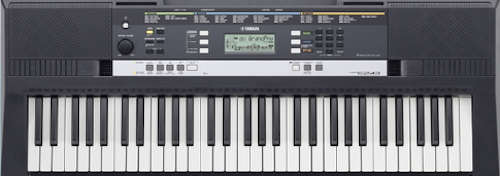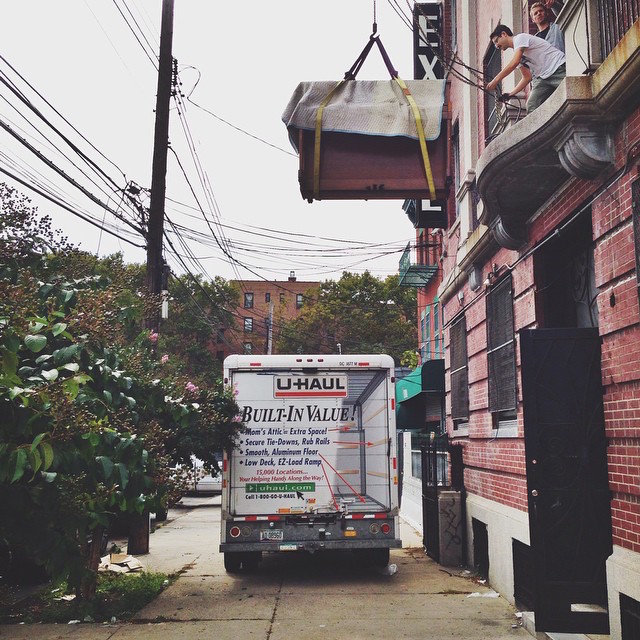+ Take your modern jazz piano and hip-hop beat making to new heights with Soundfly’s new course, Elijah Fox: Impressionist Piano & Production!
So you’ve been checking out some piano lessons online (shameless plug: our beginner piano courses are totally free!) and you’ve decided to dive into the deep end. Congratulations! You’re taking the first major step toward complete keyboard wizardry! Here are some quick tips to help you on your way to buying the best instrument for your lifestyle and price point.
Questions that need answering before you whip out your wallet:
- How big a keyboard do I want?
- You can get all different sizes of keyboards, from small, two-octave MIDI controllers to full 88-key digital pianos. If you’re only using it for production or songwriting, a smaller keyboard is probably fine. But if you hope to play classical music or dazzle your friends, you’re going to need a few more octaves. And pro tip: if you’re planning to do a lot of traveling with your keyboard, don’t get weighted keys!
- Do I want it to have built-in sounds and speakers? (Not all keyboard have them!)
- Do you want some old-school Casio keyboard beats at the press of a button or are you just looking for a decent piano sound? Also, do you want to be able to hear what you’re playing without external speakers or headphones? These are important considerations driving your decision, as different keyboards emphasize different functions.
- Do I want it to have MIDI capabilities?
- MIDI (Musical Instrument Digital Interface) lets your keyboard communicate easily with your computer, so that you can record without a mic or mimic other sounds and instruments with your keyboard. Most keyboards these days have MIDI, but it’s definitely something you want to check if you’re planning to do a lot of production.
Option 1: The Pocket Pal <$100

These are mini keyboards, usually with 24 keys or less. They might not actually fit in your pocket, but they tend to be very portable and are great for on-the-go practice with an accompanying laptop. They don’t make any sounds, but rather interface with your computer via USB and send MIDI messages to programs such as GarageBand, Logic Pro, Sonar, Cubase, and Fruity Loops. They’re great if your primary purpose for playing is production.
We like the Korg microKEY 37, $84.99 on Amazon, and the Akai Professional MPK MINI MKII, $99.99 on Amazon.
Option 2: The Casio Classic <$100

These are medium-sized keyboards (often somewhere around 44 keys). They have all those cheesy built-in sounds that you love from early 80s records, like honky pianos and synth strings that would never be mistaken for real violins. Though they have built-in sounds and speakers, they don’t usually interface with your computer via MIDI, so while they’re great learning tools, you’re stuck with the sounds you get. Honestly, these keyboards aren’t really going to get you very far in your playing, but can be a lot of fun, are great for kids, and are easy to travel with.
The Casio SA-76 44-Key Mini Keyboard is a super accessible option, $49.95 on Amazon.
+ Learn more: Put your new keyboard to the test with our FREE beginner piano courses!
Option 3: The Mighty MIDI Controller $200-1000

These are medium-sized keyboards with anywhere from 25 to 61 keys. They interface directly with your computer via USB, allowing you to use GarageBand, Logic Pro, Sonar, Cubase, Fruity Loops, and other MIDI sequencing programs instantly. Often they have a variety of expressive capabilities and additional buttons and faders for riding volume and filters in real time. This category can really go from reasonably priced keyboards with a light touch to much more expansive options with powerful filters and patches.
Check out the Novation Launchkey 61, $199.99 on Amazon, or the Roland JUNO-Di, $650 on Sweetwater.
Option 4: The Welter-Weighted $500 and up

Often with 88 keys, these keyboards have what are known as “weighted” keys, giving them the feel of a real piano. And, just like a real piano, they can be heavy! Many professionals prefer this choice for maximum expressiveness in their playing, and these days many companies offer “semi-weighted” keys, which are more portable. These keyboards have professional-grade audio outputs and can also send MIDI messages to sequencers. If you’re serious about your playing but can’t fit a piano, this is probably going to be your best option.
Here at Soundfly HQ we play the Yamaha MX-61, $699.99 on Amazon, the Roland RD or FP Series, $1,000-$2,499 on Sweetwater, and the Nord Electro or Stage, $1,999-$3,599 on Musician’s Friend.
Bonus Option: A Real-Life Piano
If you’re long on space but low on funds, head over to Craigslist (and read our article with 7 ways to get a free piano). You’ll be shocked at how many people are willing to give away pianos for free if you take it away from them. Keep in mind, moving a piano is a whole lot of work. If you do it yourself, you’ll probably need some repairs and tuning when you get it home. If you use a piano moving company, many of them charge by number of steps, and if you live in an apartment building without an elevator, that number can quickly add up. But all the effort will be worth it when you compare the dulcet tones of your real-life piano to that Casio keyboard you were thinking of buying!
We at Soundfly HQ got ourselves a piano using just this method:

And after a little elbow grease, check out what it looks like today:

Play Your Heart Out!
Continue your learning adventure on Soundfly with modern, creative courses on songwriting, mixing, production, composing, synths, beats, and more by artists like Kiefer, Kimbra, Com Truise, Jlin, Ryan Lott, RJD2, and our newly launched Elijah Fox: Impressionist Piano & Production.




